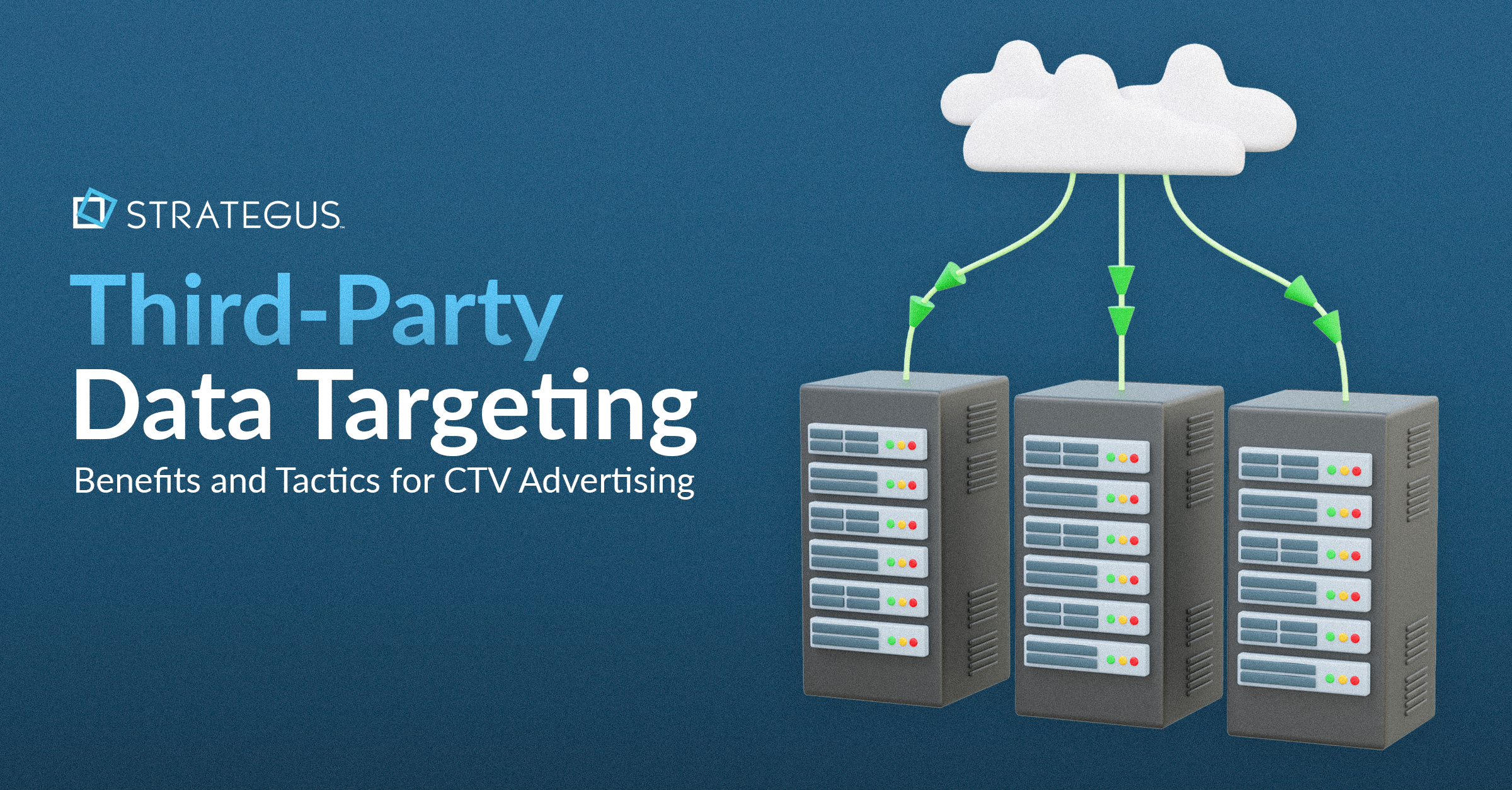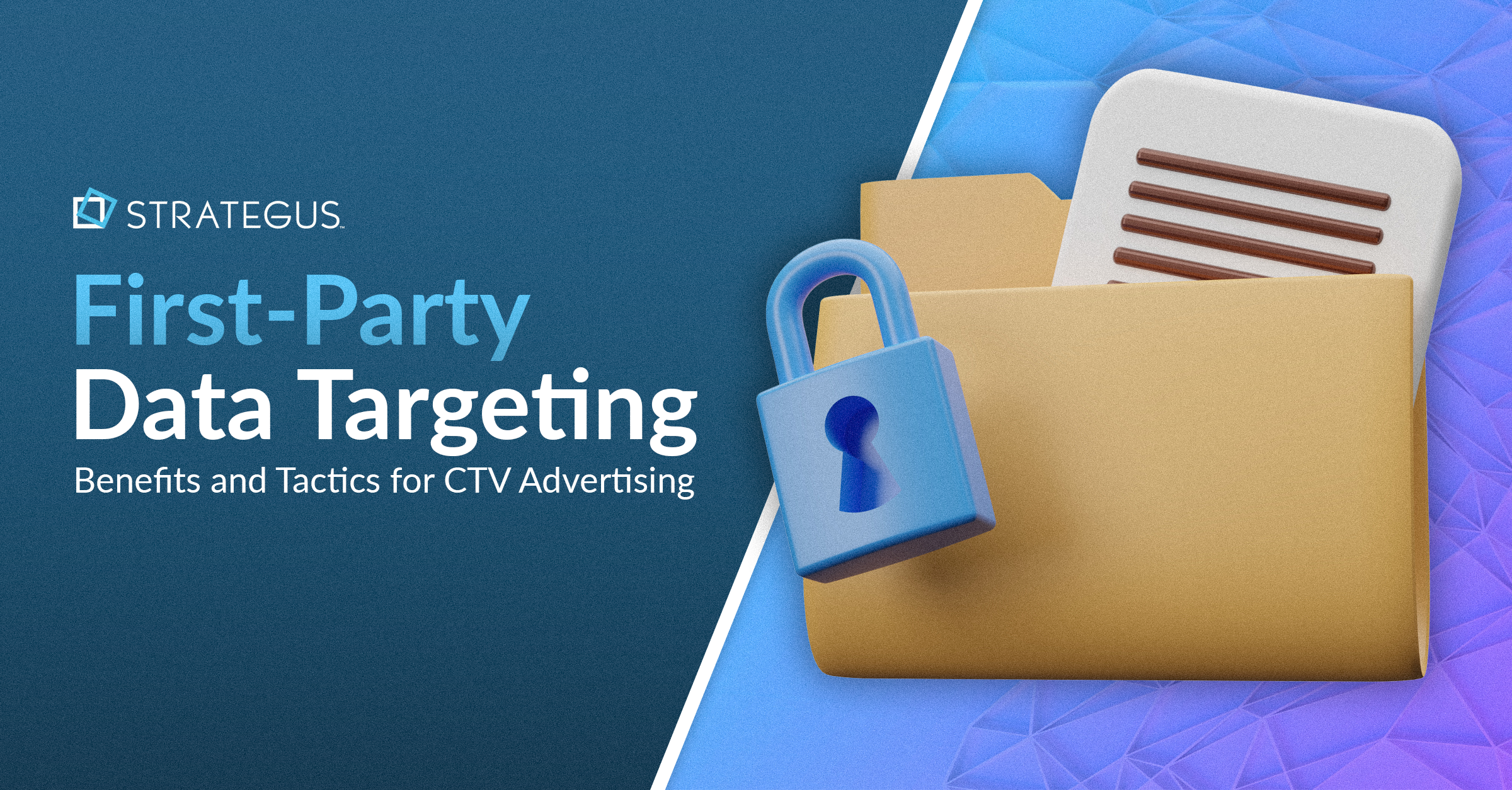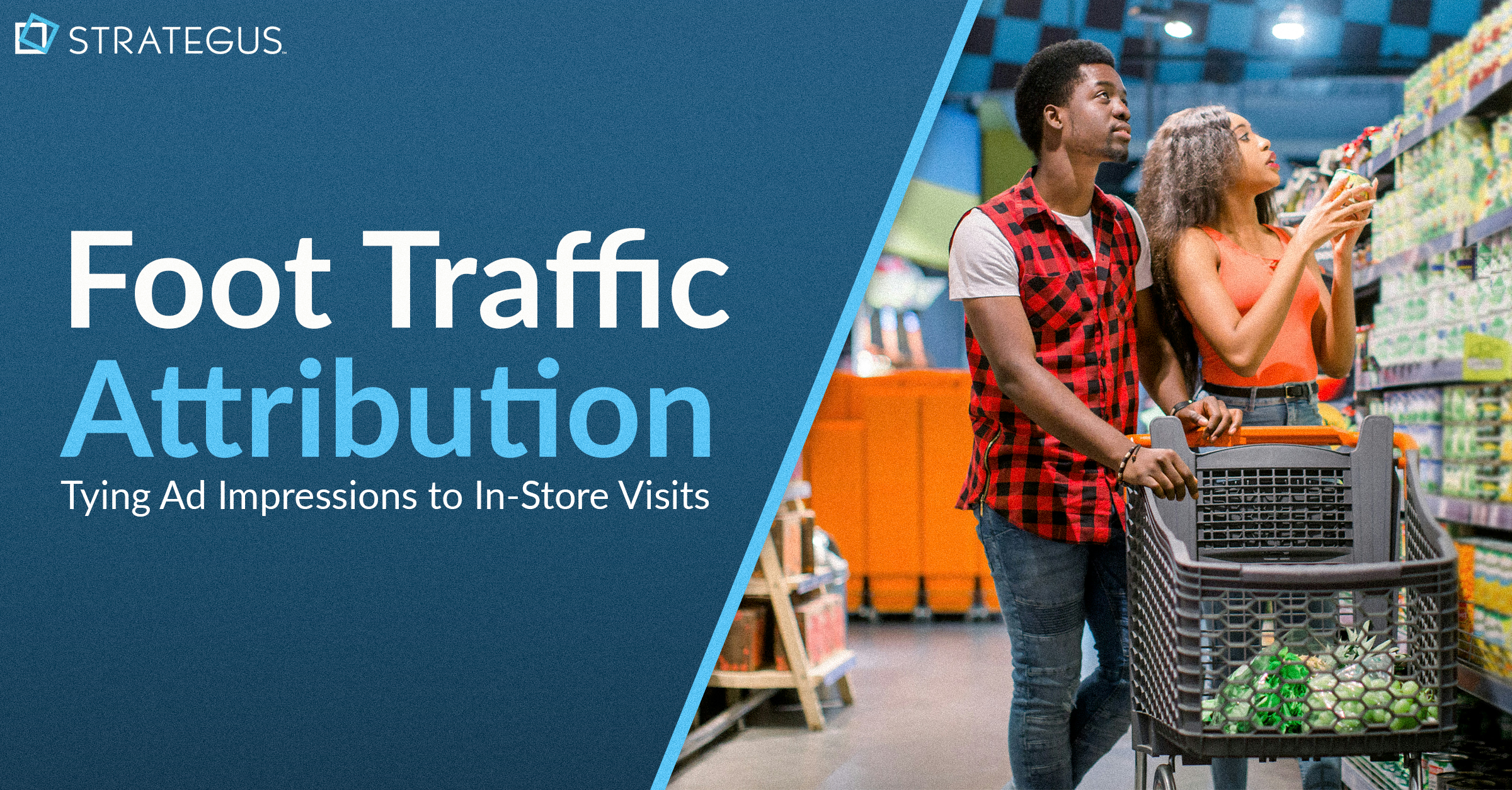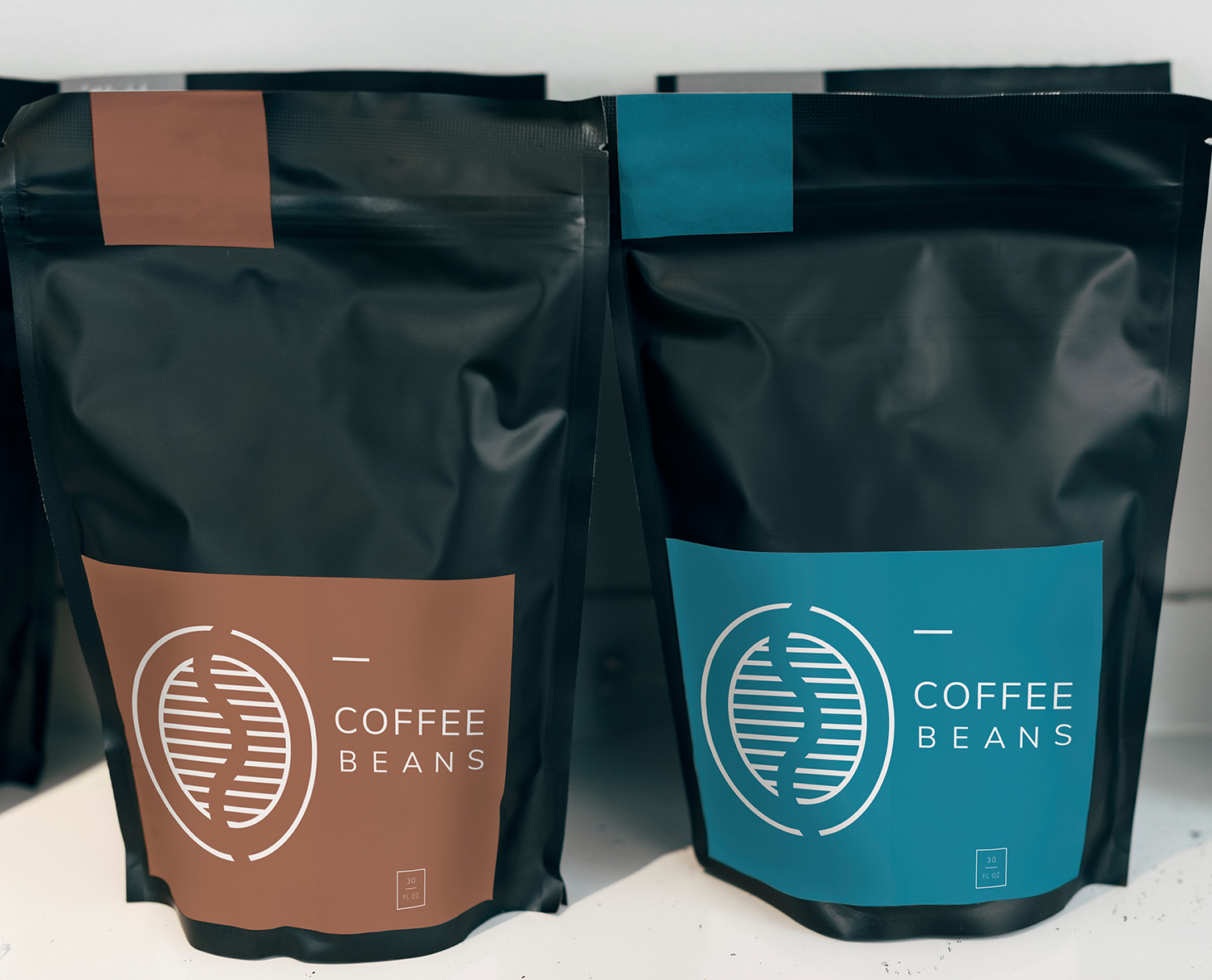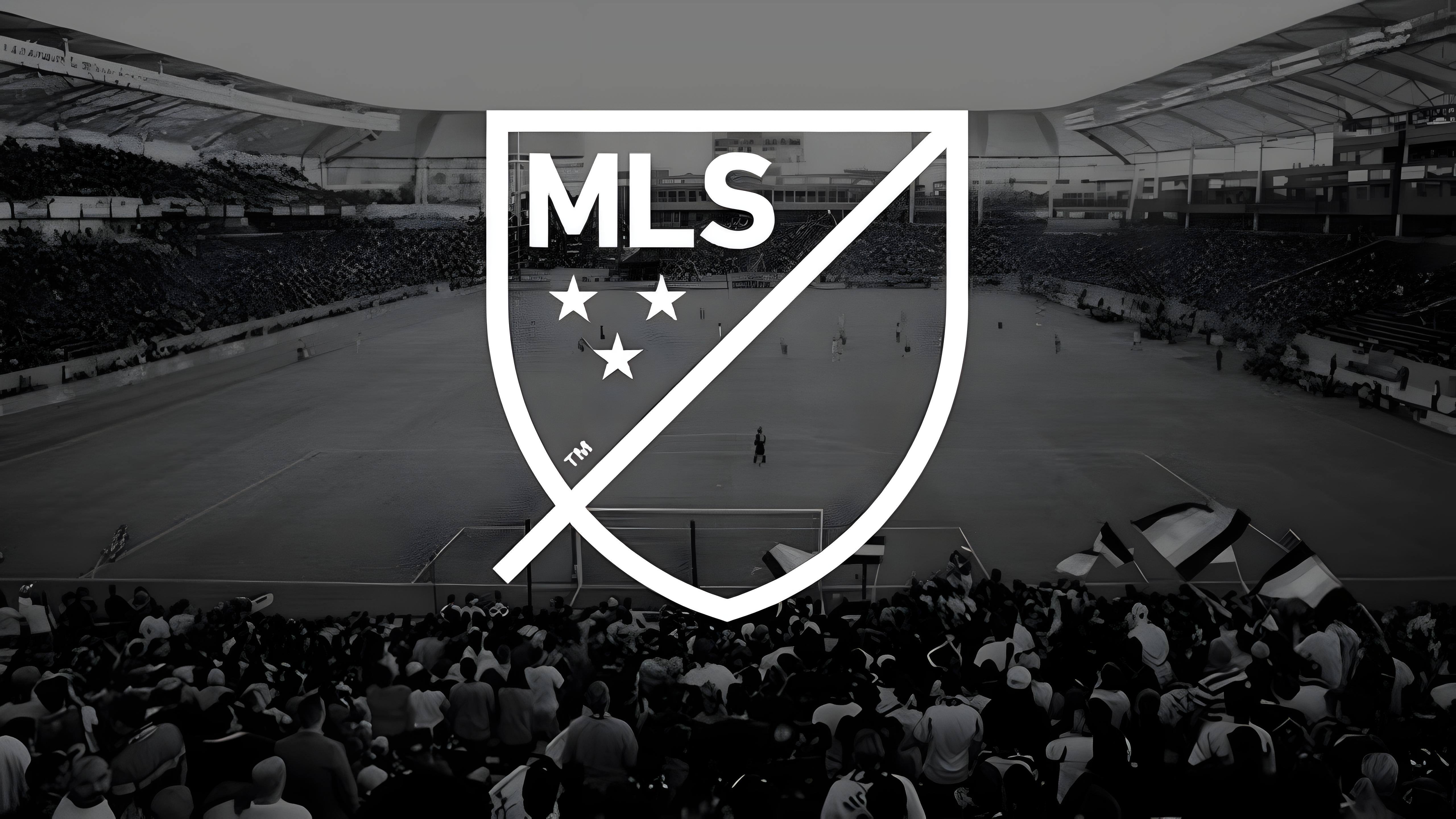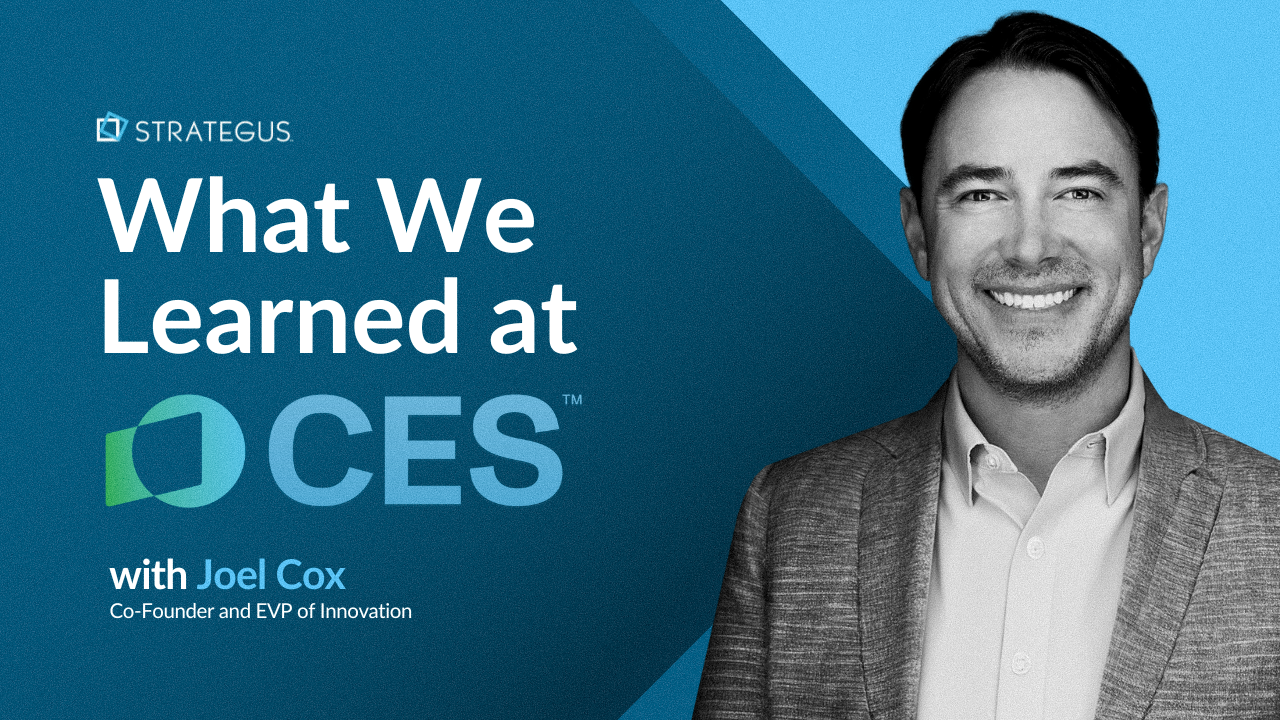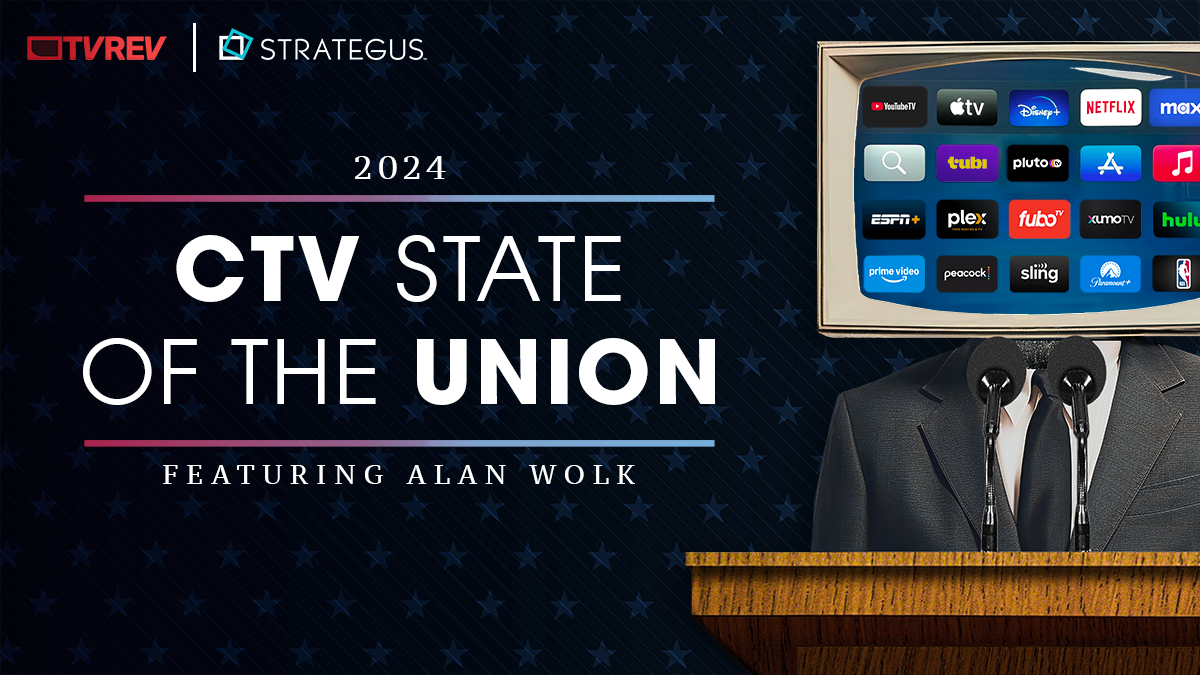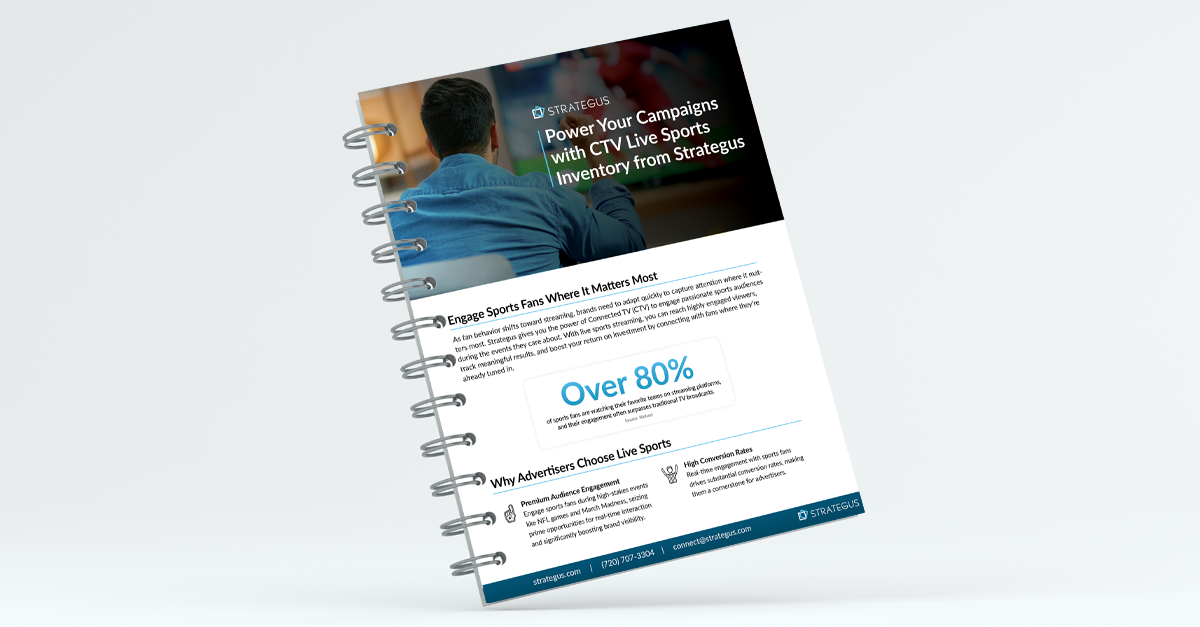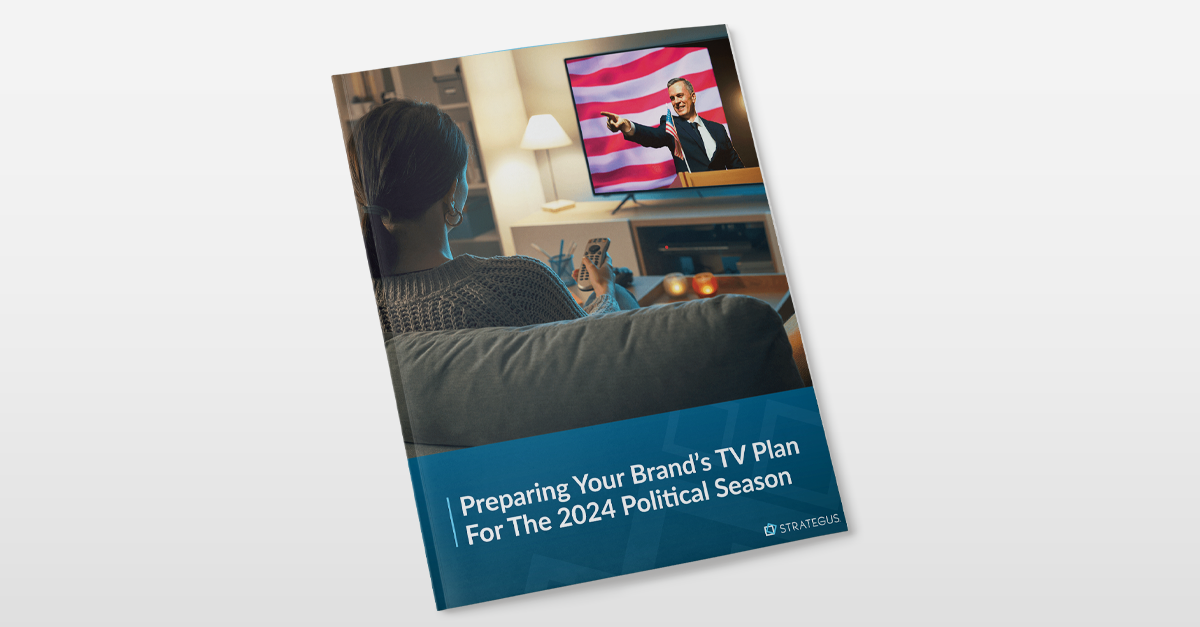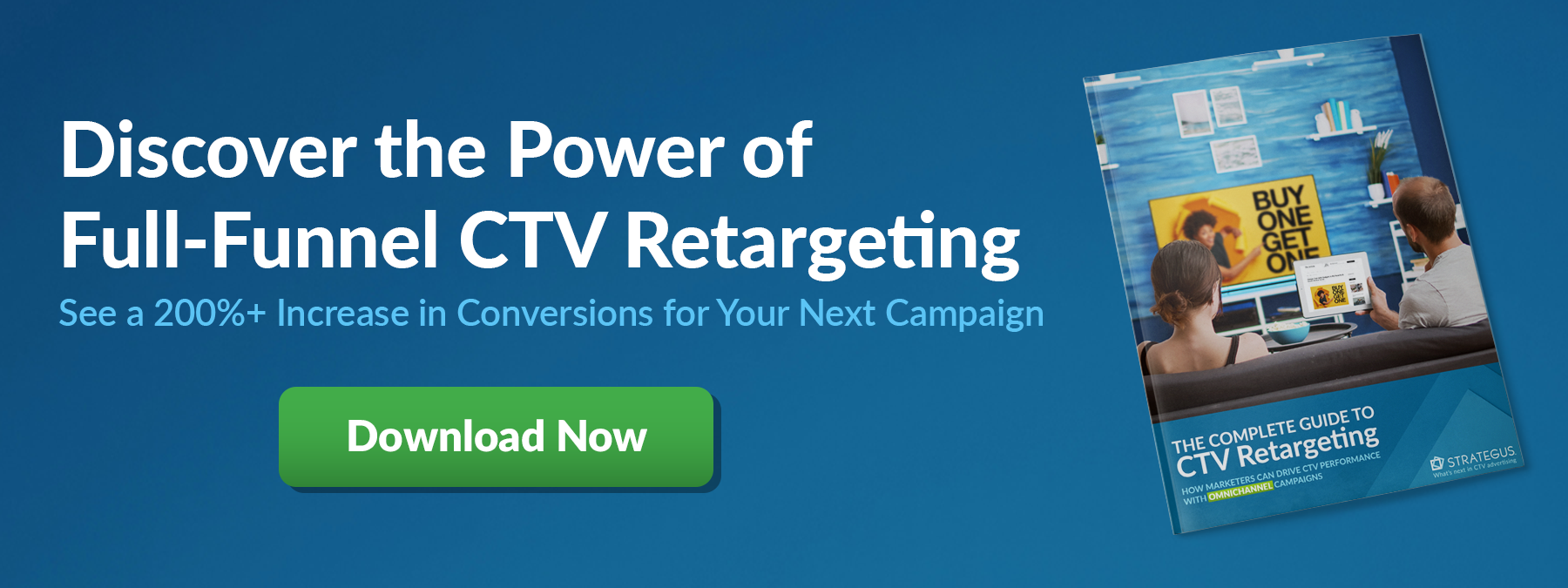- Home
- Strategus Blog
- OTT Advertising Guide: What is Over-The-Top Advertising
OTT Advertising Guide: What is Over-The-Top Advertising
 Traci Ruether
Traci Ruether
21 minutes read
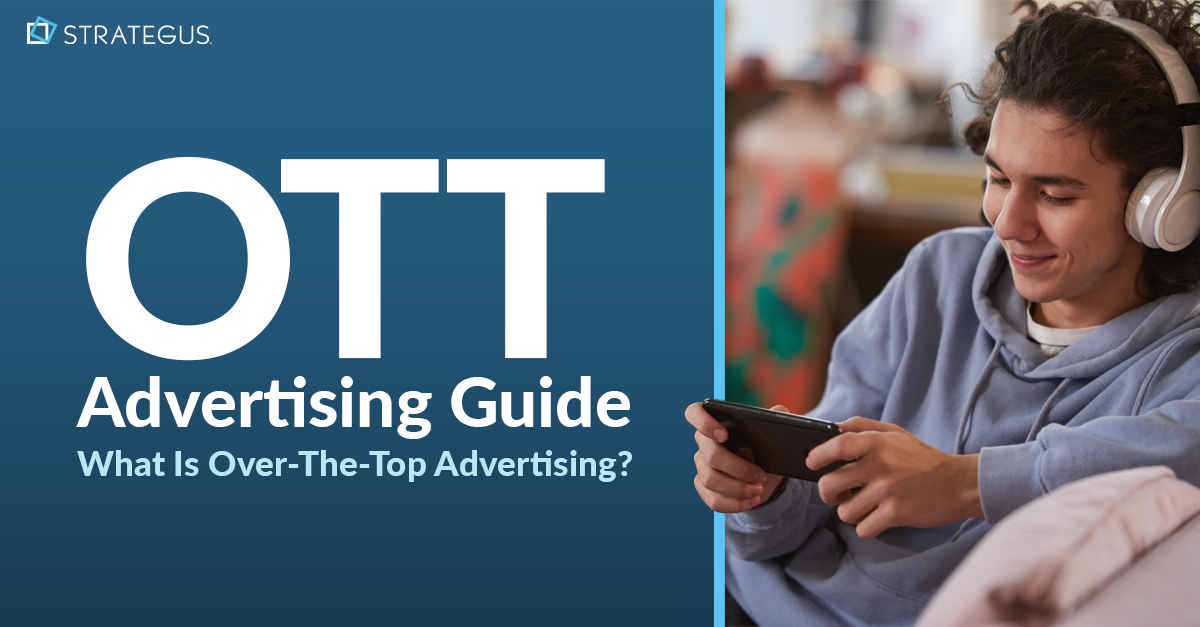
In the 17 years since Netflix launched its streaming service, over-the-top (OTT) media has become the primary way that we consume TV. OTT refers to any video content that’s delivered directly to viewers using the internet and is thus synonymous with streaming TV.
OTT media delivery also powers social media apps like TikTok, live streaming platforms like Twitch, and connected fitness services like Peloton.
And while OTT applications are vast, OTT advertising is fairly straightforward. It describes the ads delivered to viewers within streaming video content, such as the commercials that play on Hulu, PlutoTV, YouTube, and more.
As streaming adoption prevails and ad-supported services become the norm, OTT advertising has become an essential part of every marketer’s media mix. In this guide, we detail how OTT advertising works, the benefits to marketers, and important considerations when developing OTT campaigns.
What is OTT?

Short for “over-the-top,” OTT describes all streaming media content that’s delivered to viewers using the internet rather than a traditional satellite or cable network.
Top players in the OTT space include Netflix, Disney+, Amazon Prime, Hulu, YouTubeTV, PlutoTV, and Sling. Internet radio and VoIP services like WhatsApp also count as OTT because they bypass traditional broadcasting alternatives — but for the purposes of this article, we’re focusing on video streaming platforms.
What’s unique about these streaming services due to their over-the-top distribution, is that they connect advertisers with more sophisticated digital advertising capabilities ranging from advanced targeting to detailed measurement.
We’ll get into more detail on OTT advertising below, but first, let’s sort out a few of the acronyms that pop up when discussing streaming TV.
OTT vs. CTV
I’m sure you, like me, have streamed content on a laptop before. This is because OTT streaming isn’t restricted to a smart television device. Rather, OTT content can be accessed on any internet-connected device, including smartphones, tablets, desktop computers, and more.
This is a primary difference between OTT streaming and connected TV (CTV), which is restricted to premium big-screen TV devices. This distinction is what makes CTV a more premium subset of OTT. Despite this, CTV and OTT are often used interchangeably.

The important distinction between the two is:
- OTT refers to the delivery method (streaming video over the internet).
- CTV refers to the devices used to access OTT content (smart TVs, streaming devices, etc.).
OTT vs. VOD
OTT and video on demand (VOD) are also used interchangeably despite having nuanced meanings. Specifically:
- OTT refers to the delivery method (streaming video over the internet).
- VOD refers to how the content is accessed (on demand, which is to say it starts whenever a user pushes play).
 The primary reason that these two are different is that all linear and live content — such as live sports streaming and scheduled TV channels on Hulu+ LiveTV or Tubi — falls outside of the realm of VOD.
The primary reason that these two are different is that all linear and live content — such as live sports streaming and scheduled TV channels on Hulu+ LiveTV or Tubi — falls outside of the realm of VOD.
Why? This type of content will play whether the user initiates it or not, and is thus never “on demand.”
What is OTT Advertising?
OTT advertising refers to the video ads that play on OTT services, which can be thought of as a next-generation format of traditional TV advertising.

These can take a few different forms:
- Pre-roll video ads that play before the content starts.
- Mid-roll video ads that pop up in the middle of viewing.
- Banner ads that appear as a static graphic overlay during the content.
Most streaming platforms have embraced OTT advertising as an essential part of their monetization strategy today. Hybrid video-on-demand (HVOD) services like Amazon Prime offer ad-supported tiers with lower monthly fees, whereas free ad-supported streaming TV (FAST) services like Tubi rely entirely on advertising to generate revenue.
OTT ads can be understood as streaming TV ads. And because these are often placed programmatically, they offer several advantages over traditional TV advertising.
How is Over-The-Top Advertising Delivered?
Unlike cable, which delivers content through a physical connection, OTT uses the internet to stream entertainment. This digital component changes the way that ads are purchased, delivered, and measured.
When placing ads within OTT content, marketers gain access to a ton of data about the viewers. CTV ads are often purchased programmatically, enabling advertisers to target different ads to different households based on this data. This makes commercials delivered in OTT environments more relevant, which translates to a higher return on investment (ROI).
The process of programmatic OTT advertising works as follows:
- A user settles in for their favorite show on a streaming app like Hulu, Tubi, or YouTube TV.
- The app sends a bid request to a supply-side platform (SSP) looking for advertisers to compete for the ad spot. The request includes information about the user’s digital footprint, such as their viewing habits, demographics, location, and more.
- An ad exchange connects the SSP with demand-side platforms (DSPs) to centralize and automate media buying across multiple sources.
- A DSP or an ad network connects advertisers to the exchange, allowing them to set parameters for how they target ads, and then make purchases via real-time bidding.
- In a split second, the highest bidder wins the ad slot, and the viewer is served a relevant commercial without any noticeable lag.
Benefits of Programmatic OTT Advertising
When purchasing traditional TV ads, media buyers must take a gamble based on anticipated audience numbers on a given channel or program. After these transactions are finalized, the ads will run whether or not anyone is watching.
Programmatic CTV flips this on its head. Ad spots are purchased via automated auctions, generally placed based on the audience consuming the content rather than the content itself. This enables advertisers to optimize their ad spend by only targeting relevant buyers (rather than running a generic commercial for every person watching a given show).
For performance marketers, programmatic OTT holds a ton of advantages.
1. Precise Targeting and Localization
Programmatic OTT allows advertisers to only reach their desired audience and thereby eliminate wasteful ad impressions served to the wrong viewers. This is done by layering first- and third-party data sources to build custom audiences.
Some of the parameters that can be used to target OTT viewers include:
- Significant life event indicators such as a recent move, graduation, or family events like welcoming a new baby.
- In-market signs like house renovations, seasonal conditions, and buying interest signals.
- Activities and interests such as being an outdoor enthusiast, avid gardener, or luxury traveler.
- Location-based targeting ranging from geofencing at the zip code level to conquesting foot traffic from competitor stores.
Learn more about CTV audience targeting →
2. Campaign Personalization
Precise targeting lays the groundwork for ensuring a more relevant viewing experience with tailored campaigns. This is because the programmatic nature of CTV enables marketers to craft personalized campaigns by adapting ad creatives to individual audience segments.
For example, an auto dealership could segment its audience based on lifestyle components and customize the creative accordingly. For new mothers requiring a spacious enough vehicle to fit a car seat, a dealership might opt to promote their Toyota Highlanders. Meanwhile, they could run ads for their Corollas to lower-earning individuals who’d been researching sedans.
The result? The right message to the right buyer at the right time.
Learn more about CTV best practices →
3. Ad Frequency Capping
After irrelevance, one of the biggest complaints from end users watching ad-supported content is the frequency of a given ad. Nobody wants to see the same ad on repeat throughout a single program, which is where frequency capping comes into play.
Frequency capping is the ability to limit the total number of times a viewer is exposed to a particular advertisement. For this, you’ll want to confirm that your CTV ad partner offers frequency capping and other tactics to prevent ad fatigue.
4. Omnichannel Retargeting
Because OTT ads run in digital environments, advertisers can re-engage the same users on other devices through cross-device retargeting. For instance, a brand might initially reach a viewer on their smart TV, and then follow up with additional touchpoints via online video ads on YouTube, streaming audio ads on Spotify, and social media ads on Instagram.
This type of full-funnel advertising isn’t super common, but it’s a core part of how we approach OTT/CTV advertising at Strategus.
5. Real-Time Measurement and Multi-Touch Attribution
Advertisers need to see how many people saw an ad, how long they watched it, and what actions they took after watching it. While this level of insight isn’t possible when advertising on traditional TV, it is with OTT — especially when brands work with a partner like Strategus.
This type of reporting doesn’t just enable advertisers to better understand campaign performance, it also provides the data required to optimize and refine OTT efforts.
Here are some of the attribution points and KPIs you should demand from your OTT provider:
- Brand lift: Gain insight into how campaign exposure influences awareness, attitudes, and opinions about your company
- Revenue: Rely on a revenue tracking pixel to understand the revenue from online purchases generated by your campaign.
- Geoperformance: Compare performance across different regions to determine which locations warrant additional investment.
- Return on Ad Spend (ROAS): Compare ROAS across different campaigns to determine which tactics are more successful and optimize accordingly
- Conversion rate: Measure the percentage of users who complete a desired action following ad exposure — whether that’s making an online purchase, visiting a brick-and-mortar location, or filling out a form. These actions should be tied directly to attribution capabilities to paint the full picture.
The State of OTT Advertising in 2024
Research from Nielsen suggests that OTT streaming adoption is steadily growing as consumers choose digital over linear, with streaming viewership accounting for a record-breaking 38.8% share of total TV usage in May 2024.
As such, OTT is expected to eventually take over TV in its entirety. And this presents long-term benefits to advertisers thanks to how OTT ads are delivered. Strategus Co-Founder Joel Cox explains:
“Programmatic advertising brings new capabilities to more mid-market companies who can now afford more precise targeting, and therefore more accessible budgeting and reach. The opportunities for more advertisers are democratized by new technology.
We want to move the market more toward where it should go, where ads are targeted to individuals in the audience, who see ads that are relevant to them, as opposed to the old way, where ads are targeted more toward the content that people are watching. The data-driven approach makes so much more sense as the content is exploding with digital streaming over the internet. Serving relevant ads to the right people at the right time is where the advertising industry has wanted to go for generations.”
OTT Stats Related to Viewership and Ad Investment Growth
Here's a closer look at some stats about OTT growth:
- As of 2023, U.S. cord-cutting households (68.7 million) outnumber pay-TV households (62.8 million).
- In 2023, U.S. adults aged 18-49 spent more than 60% of their TV time on streaming.
- CTV ad spending is expected to reach $30 billion in 2024 and grow to $42.44 billion by 2027.
- The number of users in the OTT video market is projected to reach 4.9 billion users by 2029.
Types of OTT Platforms
The OTT model has grown into a versatile ecosystem that caters to every viewing preference and price point.
Many services like YouTube TV and Tubi blur the lines between traditional TV and streaming, offering linear channels alongside on-demand libraries. What’s more, free OTT platforms like the Roku Channel deliver linear content to viewers without even requiring a login.
Here’s a look at the different types of OTT platforms.
Subscription-Based Video on Demand (SVOD)

SVOD describes streaming services where users enter a subscription agreement and are charged recurring fees. In return, the user can watch video content without any limits.
SVOD is similar to traditional cable TV packages, allowing subscribers to consume content at a monthly flat rate. With pure-play SVOD, viewers get ad-free content for a premium rate.
Popular SVOD platforms include:
- Apple TV
- Disney+
- HBO's Max
- Netflix
- Paramount+
- Amazon Prime Video
Advertising-Based Video on Demand (AVOD)

AVOD services rely on commercials and other advertising techniques to generate revenue. These services are free to consumers. However, viewers must sit through advertisements to access the content.
These services enable viewers to access more on-demand content for a lower overall price when compared to SVOD.
Popular AVOD platforms include:
- Crackle
- Plex
- PlutoTV
- Samsung TV Plus
- Tubi
- Vudu
- YouTube
Transactional Video on Demand (TVOD)

With TVOD, users can purchase specific video content on a pay-per-view basis. This model offers viewers a set period of time (usually 24 hours) to watch ad-free premium content or one-time live events.
An easy way to think about TVOD is as a digital Blockbuster. Viewers can either rent or buy each movie or TV show.
Popular TVOD platforms include:
- Amazon Prime Video
- Google Play Movies
- iTunes
- YouTube
Hybrid Video on Demand (HVOD)

The latest OTT monetization model, HVOD, employs a mix of the monetization tactics detailed above, often offering ad-supported content for a lower price than SVOD,
In addition, HVOD services will include TVOD content, offering customers multiple ways to enjoy the video content they want at an affordable price.
Popular HVOD platforms include:
- Netflix
- Amazon Prime
- Disney+
- HBO Max
- Paramount+
Free Ad-Supported TV (FAST)

For viewers looking to do away with paid subscriptions altogether, FAST apps make it easy. These streaming services deliver linear channels at no cost to viewers — playing everything from reruns, old movies, platform-specific content, and local news.
Many smart TVs (like Roku) have default FAST apps (like the Roku Channel) within the interface, giving viewers a free and easy option for lean-back viewing out of the box.
Popular FAST platforms include:
- Pluto TV
- Tubi
- The Roku Channel
- Xumo
Virtual Multichannel Video Programming Distributors (vMVPDs)

vMVPD services deliver linear TV channels (with ads) to paying subscribers. Households looking to cut the cord without losing access to premium live sports content and must-watch shows from popular cable networks are the target market for these services.
Popular vMVPD platforms include:
- YouTube TV
- Hulu Live
- Sling TV
- FuboTV
- Philo
- DirecTV Stream
OTT Advertising Examples Across Industries
Now that we've established the landscape of OTT and its various applications, let's dive into concrete examples of how brands across industries are using OTT advertising to reach their target audiences.
Automotive OTT Advertising
TV advertising has always been a valuable channel for auto dealers. With more consumers cutting the cord each day, connected TV (CTV) has emerged as an essential part of the automotive marketing playbook.
To this end, a rural Nissan dealer partnered with us to increase online traffic using a CTV-first strategy. Their goal was to reach automotive shoppers in their vicinity and measure the holistic impact of their ads.
The dealership combined CTV awareness ads with cross-device display ad retargeting to drive users to their website. This enabled them to track the online actions taken by viewers after the initial ad exposure, thereby linking the campaign to tangible results.
Healthcare OTT Advertising
Healthcare advertising comes with a unique set of goals and challenges. Targeting the right viewers while maintaining compliance can be tricky. What’s more, the healthcare sales cycle is lengthy, making campaign measurement a different beast.
At Strategus, we partnered with a physical rehabilitation center looking to improve brand awareness. Rather than marketing to potential patients, the center opted to drive patient referrals from physicians and support staff in the area using occupation-based targeting.
The center worked with Strategus to combine CTV ads with a cross-screen strategy that layered online video, display, and streaming audio ads into their approach. This facilitated a clear path to conversion, customized to their needs. As a result, the center surpassed campaign goals in two months during a historically low period.
Law OTT Advertising
Modern legal marketing is all about being in the right place at the right time. Getting this right requires finding the niche audiences most likely to convert, be they personal unjust intenders or estate planning prospects.
Struggling with low-quality leads in trust and estate litigation, Hackard Law partnered with Strategus to speed up the sales cycle. By employing precise targeting coupled with multi-platform retargeting, they saw a dramatic shift.
Not only did the firm’s brand awareness soar across California, but they secured 3 new cases within 8 months — resulting in a 10x return on investment.
In Mark Hackard’s own words: “Strategus is a pioneer in developing and delivering programmatic Connected TV…and Strategus has been a strategic partner for us. We’ve been successful in our Strategus-led campaigns, and we plan many more.”
OTT Advertising FAQs
What’s the difference between CTV and OTT advertising?
While connected TV (CTV) refers to the smart TVs used to stream content, over the top (OTT) refers to the way that content is delivered over the internet. These terms are often used interchangeably, but the main distinction comes down to how this content is consumed. With CTV advertising, marketers gain access to premium ad spaces on the big-screen TV. OTT, on the other hand, refers to all multimedia content streamed to every device — including TikTok videos viewed on smartphones, YouTube clips on laptops, and more.

What is a CTV device?
A CTV device is any internet-connected television device that enables streaming, including smart TVs, gaming consoles like Xbox, and set-top boxes like Roku.
What is a cord cutter?
Cord cutters are TV viewers who cut ties with expensive cable and satellite services in favor of flexible streaming apps like Netflix, YouTube TV, and Tubi. This term will soon describe the majority of households, with less than 50% of US homes expected to pay for traditional TV in 2025.
How does OTT advertising work?
OTT advertising often uses programmatic media buying to automate ad placements. This allows marketers to pinpoint their ideal buyers rather than taking the spray-and-pray approach of traditional TV advertising by targeting individual viewers based on their interests, browsing activity, lifestyle choices, and more.
What KPIs are used to measure CTV advertising?
Measuring the performance of such complex campaigns requires advanced marketing attribution and reporting capabilities. While metrics about things like video completion rate (VCR) are widespread in the CTV advertising world, marketers need to dig deeper to tie ad impressions to revenue. The right attribution points to track will depend on your campaign goals, which is why it’s a good idea to work with a CTV ad partner like Strategus that offers a full suite of customizable attribution solutions. From there, agencies and brands should also track conversion rates, click-through rates, return on ad spend (ROAS), geoperformance, and more — ideally through a 24/7 reporting dashboard so that campaigns can be optimized based on real-time data.
What types of creative are needed for OTT advertising campaigns?
According to Nielsen, the visual, textual, and auditory components of OTT ads are the most impactful drivers of sales. For this reason, the most successful CTV ads tend to be more personalized. OTT ads also tend to employ more direct-response tactics by using a clear call-to-action. See our Guide to CTV Best Practices and download our Ad Specs Companion to learn more.
How can brands ensure ad viewability on OTT?
The OTT advertising ecosystems is complex, spanning countless tech providers, content publishers, and aggregators. To ensure that your ad reaches target viewers, you either need in-house expertise and resources or a managed service partner like Strategus. Reporting dashboards also help ensure ad viewability by quantifying metrics like ad impressions and video completion rate (VCR).
Are OTT ads skippable?
When OTT ads are delivered in premium CTV environments (such as a mid-roll ad on Hulu), they cannot be skipped. On the other hand, OTT ads that appear on the free version of YouTube can be skipped. This is why it’s important to consider the inventory and screens used in your OTT campaigns. At Strategus, we ensure that all CTV inventory is non-skippable, professionally produced, and long-form. However, when retargeting those viewers with online video ads on free platforms like YouTube, different rules apply.
What’s the future of TV advertising?
the future of TV advertising is about giving viewers what they want, when they want it, and how they want it. The transition from traditional TV to streaming TV has laid this foundation by giving viewers more flexibility than ever before. Streaming now commands the largest share of viewing time, accounting for a record-breaking 38.8% of all TV usage in May 2024. And by activating the full suite of capabilities offered by programmatic advertising, the industry continues to drive a more thoughtful UX that’s characterized by more relevant commercial breaks and the right ad frequency across publishers. Read our article on The Future of TV to learn more.
How do I choose an OTT advertising partner?
Taking full advantage of the vast OTT ecosystem requires operating from a tech- and data-agnostic standpoint. Rather than relying on a single programmatic platform, it’s a good idea to find a managed service partner like Strategus that can help take the complexity out of CTV advertising while connecting you with multiple tech and data providers. To learn more about choosing a CTV services provider, check out our guide, 15 Questions to Ask Your CTV Ad Partner.
How to Get Started With OTT Advertising
OTT advertising is vital to brand building and performance marketing today. Unfortunately, though, it’s easier said than done. Brands and agencies need dedicated resources, access to cross-platform inventory, integrations with data sources, and more to make the most out of their investment.
At Strategus, we deliver all of that and more.
Our managed service approach combines industry-leading technology with personalized execution to streamline the complexities of OTT.
We get to know you, your brand, your goals, and your audience. From there, we provide all the tools needed to quantify ROI and understand your customers’ journey. This includes advanced targeting capabilities, a 24/7 dashboard, and the most sophisticated OTT attribution solutions around.
Once we understand your business needs, we develop and execute a full-funnel OTT strategy that combines big-screen ads with retargeting across the programmatic ecosystem. This is all backed by reporting, continuous optimization, and instant access to our team of experts as your needs evolve.
Ready to get started with a free consultation? Contact us today.

Traci Ruether is a content marketing consultant specializing in video tech. With over a decade of experience leading content strategy, she takes a metrics-driven approach to storytelling that drives traffic to her clients' websites. Follow her on LinkedIn at linkedin.com/in/traci-ruether or learn more at traciruether.com.
Strategus is a managed services connected TV(CTV) advertising agency with over 60,000+ campaigns delivered. Find out how our experts can extend your team and drive the result that matter most.
Talk to an Expert
Table of Contents
Seeking a Custom CTV Strategy That Delivers?
What to read next
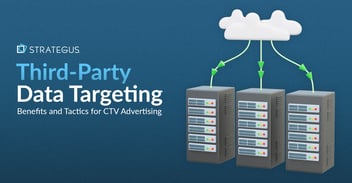
Third-Party Data Targeting for CTV: Benefits & Tactics
Third-party data. It’s a term that’s thrown around, and yet few take the time to detail its pros and cons — much less strategies for using...
7 minutes read
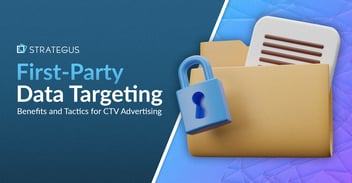
First-Party Data Targeting: Benefits and Tactics for CTV Advertising
First-party data is the information that companies collect directly from their customers rather than through intermediaries. Advertisers use this...
10 minutes read

Foot-Traffic Attribution: Tying Ad Impressions to In-Store Visits
The marketing funnel has changed. Today’s shoppers often begin researching products from the comfort of their homes and don’t set foot into a store...
8 minutes read

CTV Attribution: What It Is and How It Works
Connected TV (CTV) viewing is on the rise — and that’s good news for marketers. Not only can CTV ads be precisely targeted to individual households,...
9 minutes read



